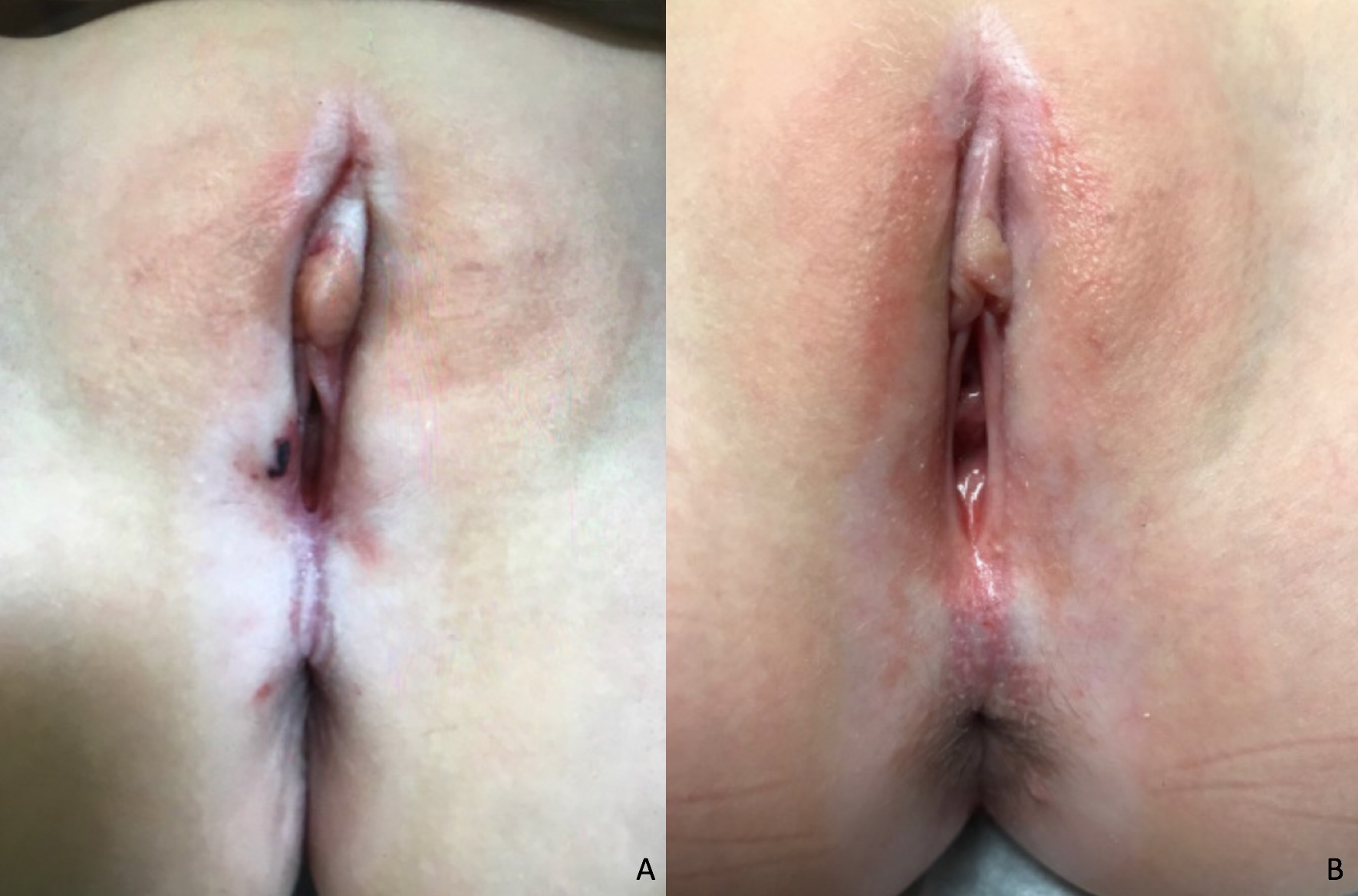Lichen Sclerosus: An Uncommon but Treatable Cause of Lower Urinary Tract Symptoms in Prepubertal Girls
Melinda Wang, BS1, Angela M. Arlen, MD1, Anne G. Dudley, MD2, Alla Vash-Margita, MD1.
1Yale University, New Haven, CT, USA, 2Connecticut Children's Medical Center, Hartford, CT, USA.
BACKGROUND: Lichen sclerosus (LS) is a chronic inflammatory dermatosis commonly visualized in the anogenital region with porcelain-white atrophic patches that often extend to the perianal region in a figure-of-eight configuration. LS is known to increase lower urinary tract symptoms (LUTS), including incontinence, in postmenopausal women, however there is a paucity of data on prepubertal girls. Lack of familiarity among pediatric providers may lead to a significant diagnostic and treatment delay, resulting in irreversible genital skin changes. We report a case series of prepubertal girls diagnosed with LS to assess baseline characteristics, clinical presentation including LUTS, and treatment response.
METHODS: Prepubertal girls diagnosed with LS during a 24-month period were identified. All girls were treated with topical corticosteroids according to standardized protocol. Patient demographics, clinical presentation, time from onset of bladder-bowel symptoms to lichen sclerosus diagnosis, and treatment response were assessed.
RESULTS: Thirteen prepubertal girls with LS were identified through our Pediatric Urology and Pediatric Adolescent Gynecology Clinics. Median age at diagnosis was 8 yrs (range 3-10 yrs) with mean BMI 17.7 ± 3.9. Majority of girls with LS (76.9%, 10/13) presented initially with LUTS symptoms, which were diagnosed at a median age of 4 yrs (range 2-8 yrs). 54% (713) patients had a history of constipation and 38.5% (5/13) reported daytime urinary incontinence. Other voiding symptoms included difficulty with urination (n = 3), dribbling (n = 3) urgency (n =2), incomplete emptying (n = 2), nocturnal enuresis (n = 2) and urinary frequency, sprayed stream, dysuria and pain with defecation in 1 each. Lichen sclerosis symptoms started at median age 5 yrs (range 2-10 yrs) with mean time to diagnosis of 0.58 years. LS symptoms included classic pigment change in all 13 girls [Figure 1A]. Other LS symptoms included pruritis in 10, fissures in 5, vulvar irritation in 4, perineal pain in 3 as well as vulvar discharge in 3 girls. Patients were treated with a standard course of induction followed by maintenance topical corticosteroid therapy; 46.2% (6/13) girls had complete resolution of LS while the remainder had improved but persistent disease [Figure 1B]. Of patients with LUTS, 80% had resolution/improvement with LS treatment while 20% had unchanged voiding symptoms. Both patients with unchanged LUTS had persistent LS.
CONCLUSIONS: Lichen sclerosus often presents with lower urinary tract symptoms in prepubertal girls, highlighting the need for pediatric urologists to be able promptly and accurately identify this unique subset of voiding patients. LS treatment typically results in resolution or improvement of voiding symptoms. 
Back to 2019 Abstracts




